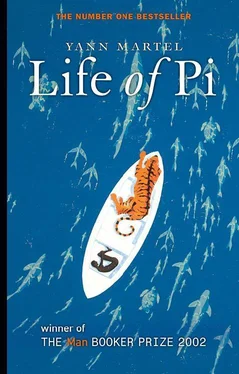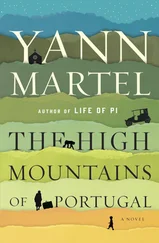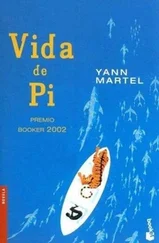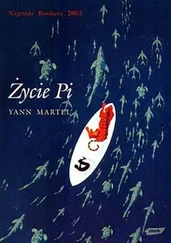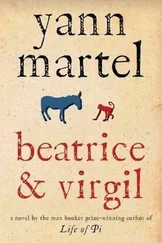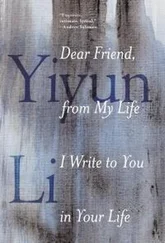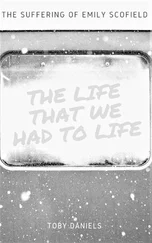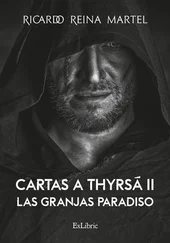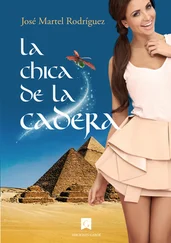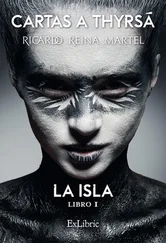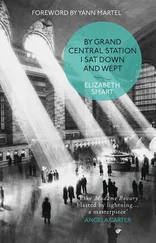Yann Martel - Life of Pi
Здесь есть возможность читать онлайн «Yann Martel - Life of Pi» весь текст электронной книги совершенно бесплатно (целиком полную версию без сокращений). В некоторых случаях можно слушать аудио, скачать через торрент в формате fb2 и присутствует краткое содержание. Год выпуска: 2002, ISBN: 2002, Издательство: Canongate Books, Жанр: Современная проза, на английском языке. Описание произведения, (предисловие) а так же отзывы посетителей доступны на портале библиотеки ЛибКат.
- Название:Life of Pi
- Автор:
- Издательство:Canongate Books
- Жанр:
- Год:2002
- ISBN:9781847674210
- Рейтинг книги:3 / 5. Голосов: 1
-
Избранное:Добавить в избранное
- Отзывы:
-
Ваша оценка:
- 60
- 1
- 2
- 3
- 4
- 5
Life of Pi: краткое содержание, описание и аннотация
Предлагаем к чтению аннотацию, описание, краткое содержание или предисловие (зависит от того, что написал сам автор книги «Life of Pi»). Если вы не нашли необходимую информацию о книге — напишите в комментариях, мы постараемся отыскать её.
Life of Pi — читать онлайн бесплатно полную книгу (весь текст) целиком
Ниже представлен текст книги, разбитый по страницам. Система сохранения места последней прочитанной страницы, позволяет с удобством читать онлайн бесплатно книгу «Life of Pi», без необходимости каждый раз заново искать на чём Вы остановились. Поставьте закладку, и сможете в любой момент перейти на страницу, на которой закончили чтение.
Интервал:
Закладка:
In the trade, dogs are sometimes used as foster mothers for lion cubs. Though the cubs grow to become larger than their caregiver, and far more dangerous, they never give their mother trouble and she never loses her placid behaviour or her sense of authority over her litter. Signs have to be put up to explain to the public that the dog is not live food left for the lions (just as we had to put up a sign pointing out that rhinoceros are herbivores and do not eat goats).
What could be the explanation for zoomorphism? Can’t a rhinoceros distinguish big from small, tough hide from soft fur? Isn’t it plain to a dolphin what a dolphin is like? I believe the answer lies in something I mentioned earlier, that measure of madness that moves life in strange but saving ways. The golden agouti, like the rhinoceros, was in need of companionship. The circus lions don’t care to know that their leader is a weakling human; the fiction guarantees their social well-being and staves off violent anarchy. As for the lion cubs, they would positively keel over with fright if they knew their mother was a dog, for that would mean they were motherless, the absolute worst condition imaginable for any young, warm-blooded life. I’m sure even the adult viper, as it swallowed the mouse, must have felt somewhere in its undeveloped mind a twinge of regret, a feeling that something greater was just missed, an imaginative leap away from the lonely, crude reality of a reptile.
CHAPTER 33
He shows me family memorabilia. Wedding photos first. A Hindu wedding with Canada prominently on the edges. A younger him, a younger her. They went to Niagara Falls for their honeymoon. Had a lovely time. Smiles to prove it. We move back in time. Photos from his student days at U of T: with friends; in front of St. Mike’s; in his room; during Diwali on Gerrard Street; reading at St. Basil’s Church dressed in a white gown; wearing another kind of white gown in a lab of the zoology department; on graduation day. A smile every time, but his eyes tell another story .
Photos from Brazil, with plenty of three-toed sloths in situ .
With a turn of a page we jump over the Pacific—and there is next to nothing. He tells me that the camera did click regularly—on all the usual important occasions—but everything was lost. What little there is consists of what was assembled by Mamaji and mailed over after the events .
There is a photo taken at the zoo during the visit of a V.I.P. In black and white another world is revealed to me. The photo is crowded with people. A Union cabinet minister is the focus of attention. There’s a giraffe in the background. Near the edge of the group, I recognize a younger Mr. Adirubasamy .
“Mamaji?” I ask, pointing .
“Yes,” he says .
There’s a man next to the minister, with horn-rimmed glasses and hair very cleanly combed. He looks like a plausible Mr. Patel, face rounder than his son’s .
“Is this your father?” I ask .
He shakes his head. “I don’t know who that is.”
There’s a pause of a few seconds. He says, “It’s my father who took the picture.”
On the same page there’s another group shot, mostly of schoolchildren. He taps the photo .
“That’s Richard Parker,” he says .
I’m amazed. I look closely, trying to extract personality from appearance. Unfortunately, it’s black and white again and a little out of focus. A photo taken in better days, casually. Richard Parker is looking away. He doesn’t even realize that his picture is being taken .
The opposing page is entirely taken up by a colour photo of the swimming pool of the Aurobindo Ashram. It’s a nice big outdoor pool with clear, sparkling water, a clean blue bottom and an attached diving pool .
The next page features a photo of the front gate of Petit Séminaire school. An arch has the school’s motto painted on it: Nil magnum nisi bonum. No greatness without goodness .
And that’s it. An entire childhood memorialized in four nearly irrelevant photographs .
He grows sombre .
“The worst of it,” he says, “is that I can hardly remember what my mother looks like any more. I can see her in my mind, but it’s fleeting. As soon as I try to have a good look at her, she fades. It’s the same with her voice. If I saw her again in the street, it would all come back. But that’s not likely to happen. It’s very sad not to remember what your mother looks like.”
He closes the book .
CHAPTER 34
Father said, “We’ll sail like Columbus!”
“He was hoping to find India,” I pointed out sullenly.
We sold the zoo, lock, stock and barrel. To a new country, a new life. Besides assuring our collection of a happy future, the transaction would pay for our immigration and leave us with a good sum to make a fresh start in Canada (though now, when I think of it, the sum is laughable—how blinded we are by money). We could have sold our animals to zoos in India, but American zoos were willing to pay higher prices. CITES, the Convention on International Trade in Endangered Species, had just come into effect, and the window on the trading of captured wild animals had slammed shut. The future of zoos would now lie with other zoos. The Pondicherry Zoo closed shop at just the right time. There was a scramble to buy our animals. The final buyers were a number of zoos, mainly the Lincoln Park Zoo in Chicago and the soon-to-open Minnesota Zoo, but odd animals were going to Los Angeles, Louisville, Oklahoma City and Cincinnati.
And two animals were being shipped to the Canada Zoo. That’s how Ravi and I felt. We did not want to go. We did not want to live in a country of gale-force winds and minus-two-hundred-degree winters. Canada was not on the cricket map. Departure was made easier—as far as getting us used to the idea—by the time it took for all the pre-departure preparations. It took well over a year. I don’t mean for us. I mean for the animals. Considering that animals dispense with clothes, footwear, linen, furniture, kitchenware, toiletries; that nationality means nothing to them; that they care not a jot for passports, money, employment prospects, schools, cost of housing, healthcare facilities—considering, in short, their lightness of being, it’s amazing how hard it is to move them. Moving a zoo is like moving a city.
The paperwork was colossal. Litres of water used up in the wetting of stamps. Dear Mr. So-and-so written hundreds of times. Offers made. Sighs heard. Doubts expressed. Haggling gone through. Decisions sent higher up for approval. Prices agreed upon. Deals clinched. Dotted lines signed. Congratulations given. Certificates of origin sought. Certificates of health sought. Export permits sought. Import permits sought. Quarantine regulations clarified. Transportation organized. A fortune spent on telephone calls. It’s a joke in the zoo business, a weary joke, that the paperwork involved in trading a shrew weighs more than an elephant, that the paperwork involved in trading an elephant weighs more than a whale, and that you must never try to trade a whale, never. There seemed to be a single file of nit-picking bureaucrats from Pondicherry to Minneapolis via Delhi and Washington, each with his form, his problem, his hesitation. Shipping the animals to the moon couldn’t possibly have been more complicated. Father pulled nearly every hair off his head and came close to giving up on a number of occasions.
There were surprises. Most of our birds and reptiles, and our lemurs, rhinos, orang-utans, mandrills, lion-tailed macaques, giraffes, anteaters, tigers, leopards, cheetahs, hyenas, zebras, Himalayan and sloth bears, Indian elephants and Nilgiri tahrs, among others, were in demand, but others, Elfie for example, were met with silence. “A cataract operation!” Father shouted, waving the letter. “They’ll take her if we do a cataract operation on her right eye. On a hippopotamus! What next? Nose jobs on the rhinos?” Some of our other animals were considered “too common”, the lions and baboons, for example. Father judiciously traded these for an extra orang-utan from the Mysore Zoo and a chimpanzee from the Manila Zoo. (As for Elfie, she lived out the rest of her days at the Trivandrum Zoo.) One zoo asked for “an authentic Brahmin cow” for their children’s zoo. Father walked out into the urban jungle of Pondicherry and bought a cow with dark wet eyes, a nice fat hump and horns so straight and at such right angles to its head that it looked as if it had licked an electrical outlet. Father had its horns painted bright orange and little plastic bells fitted to the tips, for added authenticity.
Читать дальшеИнтервал:
Закладка:
Похожие книги на «Life of Pi»
Представляем Вашему вниманию похожие книги на «Life of Pi» списком для выбора. Мы отобрали схожую по названию и смыслу литературу в надежде предоставить читателям больше вариантов отыскать новые, интересные, ещё непрочитанные произведения.
Обсуждение, отзывы о книге «Life of Pi» и просто собственные мнения читателей. Оставьте ваши комментарии, напишите, что Вы думаете о произведении, его смысле или главных героях. Укажите что конкретно понравилось, а что нет, и почему Вы так считаете.
